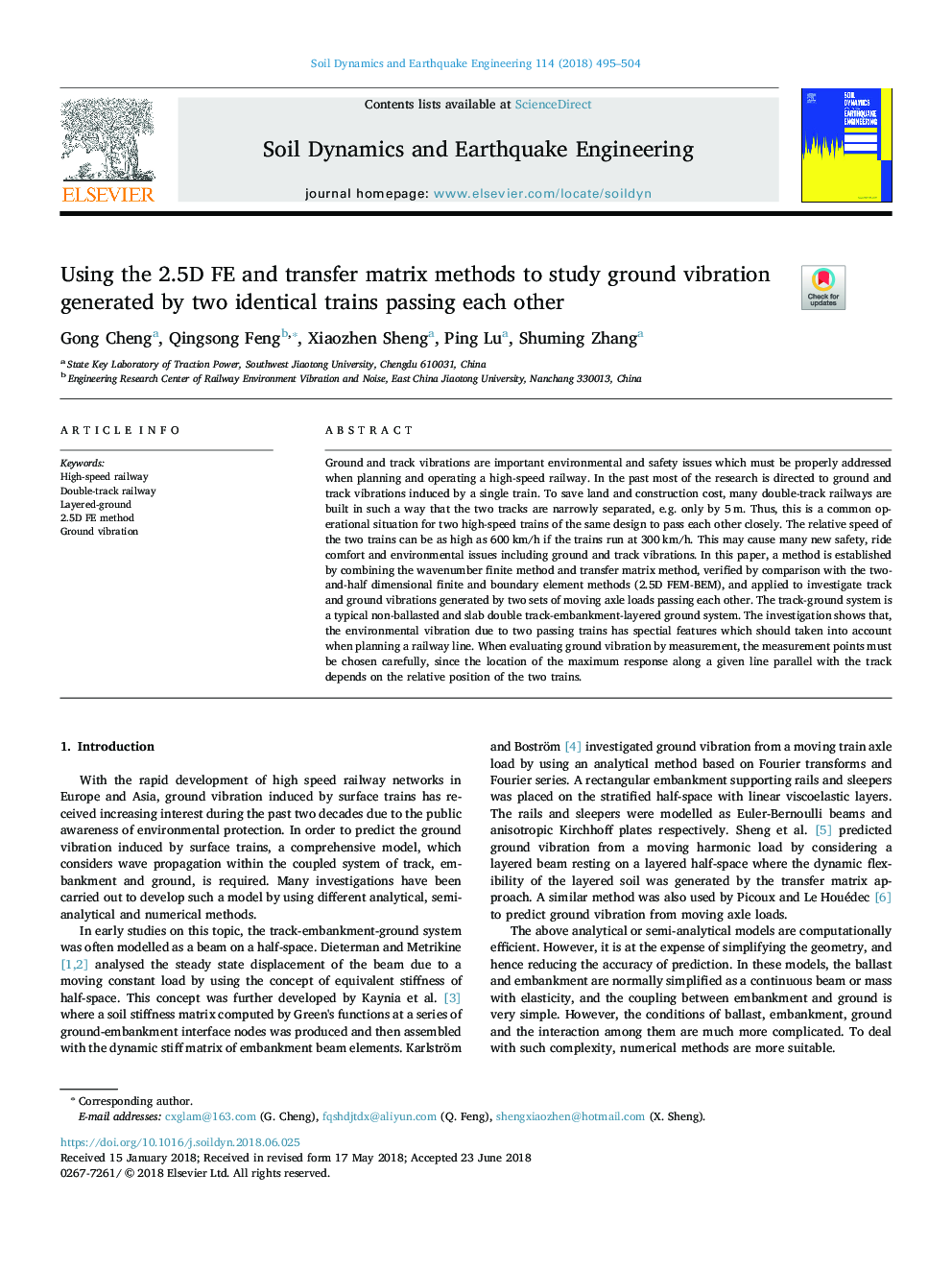| Article ID | Journal | Published Year | Pages | File Type |
|---|---|---|---|---|
| 6769687 | Soil Dynamics and Earthquake Engineering | 2018 | 10 Pages |
Abstract
Ground and track vibrations are important environmental and safety issues which must be properly addressed when planning and operating a high-speed railway. In the past most of the research is directed to ground and track vibrations induced by a single train. To save land and construction cost, many double-track railways are built in such a way that the two tracks are narrowly separated, e.g. only by 5â¯m. Thus, this is a common operational situation for two high-speed trains of the same design to pass each other closely. The relative speed of the two trains can be as high as 600â¯km/h if the trains run at 300â¯km/h. This may cause many new safety, ride comfort and environmental issues including ground and track vibrations. In this paper, a method is established by combining the wavenumber finite method and transfer matrix method, verified by comparison with the two-and-half dimensional finite and boundary element methods (2.5D FEM-BEM), and applied to investigate track and ground vibrations generated by two sets of moving axle loads passing each other. The track-ground system is a typical non-ballasted and slab double track-embankment-layered ground system. The investigation shows that, the environmental vibration due to two passing trains has spectial features which should taken into account when planning a railway line. When evaluating ground vibration by measurement, the measurement points must be chosen carefully, since the location of the maximum response along a given line parallel with the track depends on the relative position of the two trains.
Keywords
Related Topics
Physical Sciences and Engineering
Earth and Planetary Sciences
Geotechnical Engineering and Engineering Geology
Authors
Gong Cheng, Qingsong Feng, Xiaozhen Sheng, Ping Lu, Shuming Zhang,
